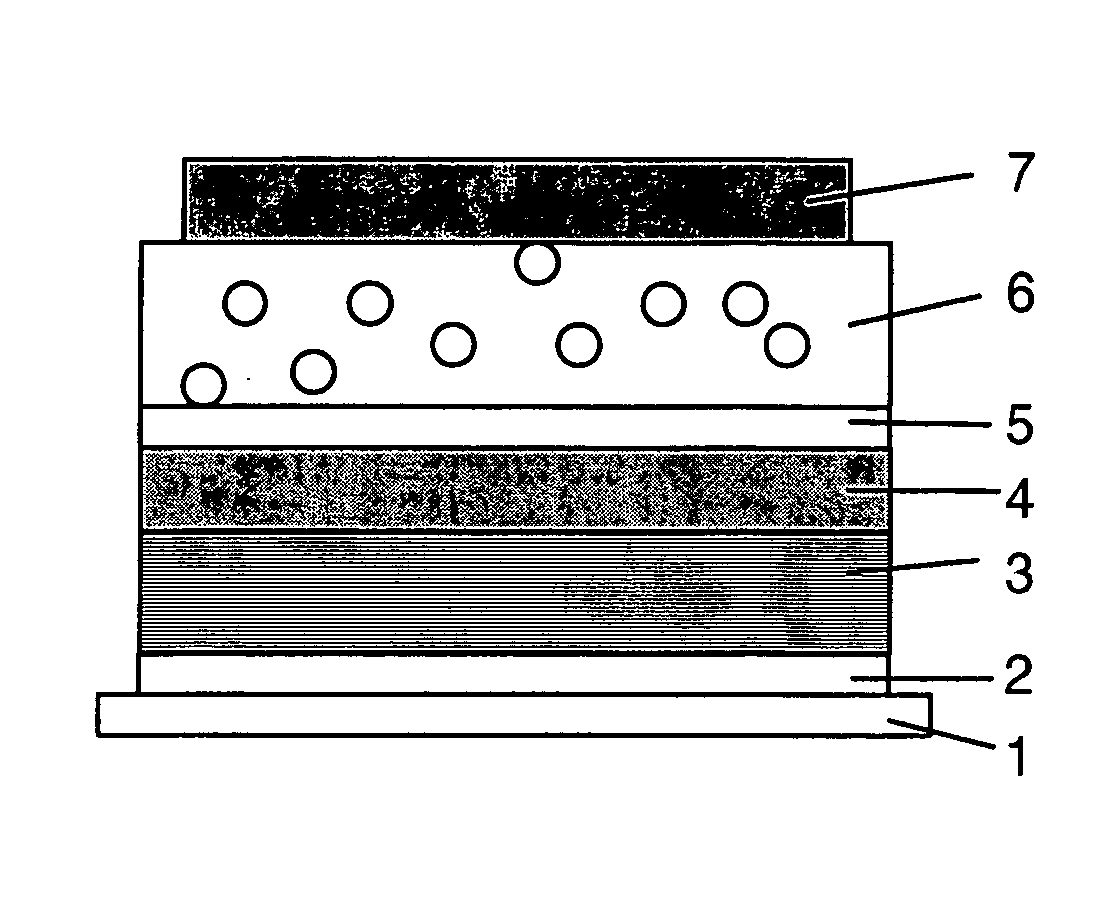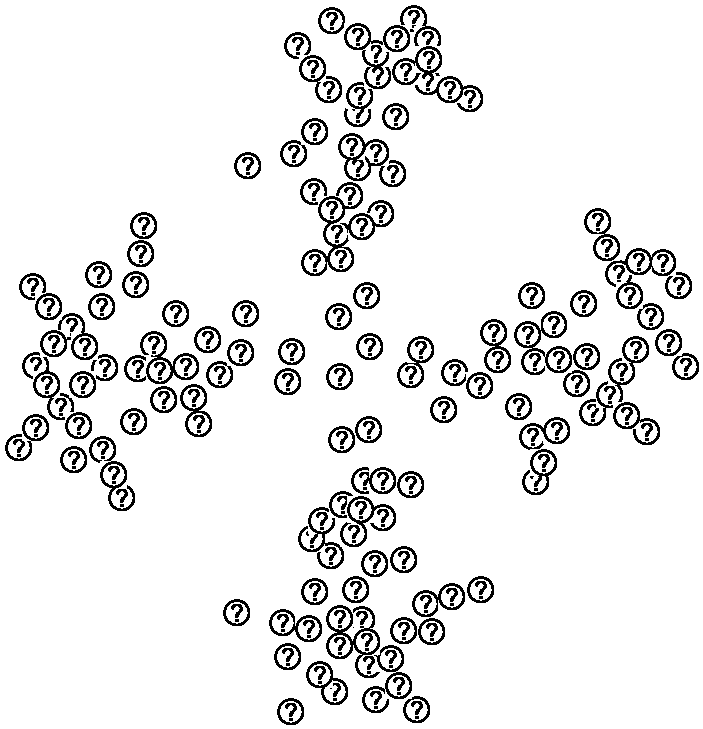Light-emitting component and process for its preparation
a light-emitting component and light-emitting diode technology, applied in the field of light-emitting components, can solve the problems of not being able to rationally apply more than two different polymeric layers, affecting the efficiency of light-emitting diodes, etc., to achieve the effect of easy structurability and greater flexibility in the layer composi
- Summary
- Abstract
- Description
- Claims
- Application Information
AI Technical Summary
Benefits of technology
Problems solved by technology
Method used
Image
Examples
Embodiment Construction
[0042] As shown in FIG. 1, a transparent base contact 2 is placed as anode on a substrate 1. Deposited on this base contact 2 is a first polymer layer as polymeric hole-transporting layer 3, and a second polymer layer as polymeric emitter layer 4. This layer composite of a first and second polymer layer consists of PEDIT:PSS (Baytron-P) of H. C. Stark, Germany. Vapor deposited thereon is a first molecular layer as intermediate layer 5 which consists of a 10 nm layer of BPhen (batophenanthroline). Arranged thereon is a second molecular layer in the form of an electron-transporting layer and injecting layer 6 of BPhen:Cs (molar doping concentration about 10:1 to 1:1). Finally, the organic light-emitting diode according to FIG. 1 is provided with an aluminum cover contact 7.
[0043] In this connection, Cs can be regarded as a non-expedient electron-yielding dopant, since the molecular weight of Cs is too low to be able to achieve a diffusion-stable doped layer therewith. Provided, there...
PUM
| Property | Measurement | Unit |
|---|---|---|
| Thickness | aaaaa | aaaaa |
| Thickness | aaaaa | aaaaa |
| Thickness | aaaaa | aaaaa |
Abstract
Description
Claims
Application Information
 Login to View More
Login to View More - R&D
- Intellectual Property
- Life Sciences
- Materials
- Tech Scout
- Unparalleled Data Quality
- Higher Quality Content
- 60% Fewer Hallucinations
Browse by: Latest US Patents, China's latest patents, Technical Efficacy Thesaurus, Application Domain, Technology Topic, Popular Technical Reports.
© 2025 PatSnap. All rights reserved.Legal|Privacy policy|Modern Slavery Act Transparency Statement|Sitemap|About US| Contact US: help@patsnap.com



